Floras Lake, sparkling in the afternoon sun





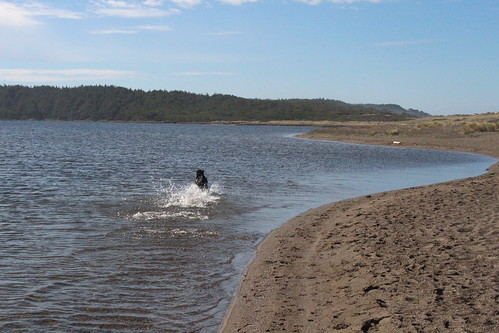

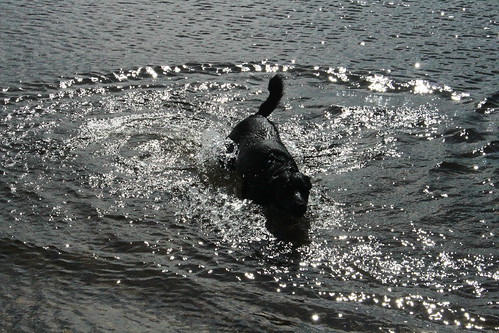

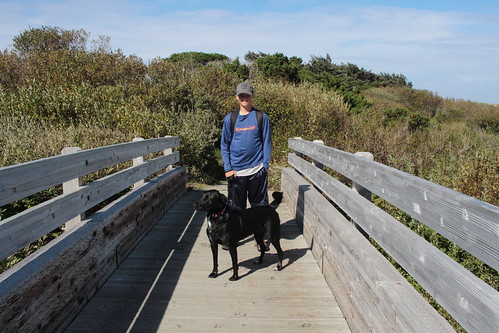
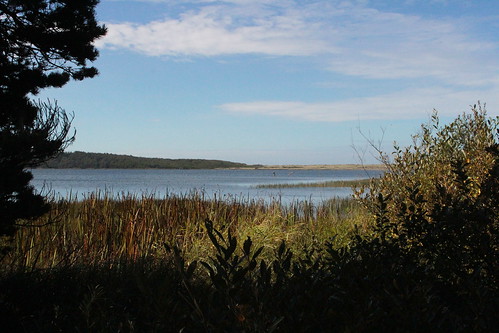


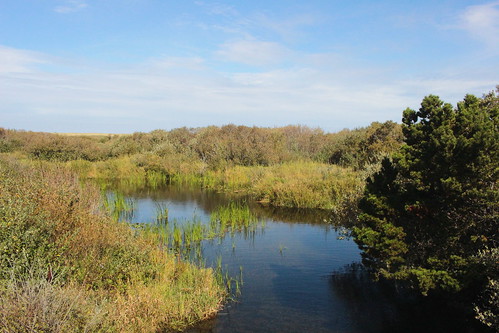

For a few weeks in late summer, Chetco Bar was the nation’s top priority fire. It burned in an area of more than 191,000 acres, forcing hundreds of people to evacuate and destroying several homes. It also – along with other major fires — created unhealthy air quality over western Oregon and northern California. As the fire grew and the air thickened, tempers flared.
“It’s horrific. And there is no f#@%ing excuse for it whatsoever. The US Forest Service could have prevented this easily, and they didn’t.”
That’s Rogue River resident Ken Lewis. On his YouTube video blog, Lewis accused the Forest Service of allowing the Chetco Bar fire to burn as part of a liberal agenda. Conservative talk radio host Bill Meyer at KMED in Medford repeatedly blasted the Chetco Bar Fire response.
“I have no doubt that the terrain where this started, the original quarter acre, is very difficult and possibly dangerous for on the ground,” he said. “But it could have been taken care of back then with a few helicopter buckets. And then we would be talking about what a great summer we’ve having.”
Angry tweets and Facebook posts amplified the indignation.
This is the atmosphere Forest Service officials faced at a public meeting in Brookings on Sept. 28. About 120 people showed up at the high school gym to hear what fire managers had to say.
Craig Trulock, with the Rogue River-Siskiyou National Forest, denied the fire was deliberately allowed to burn.
“Just wanted to state right off, this was never a fire that we wanted,” Trulock told the crowd. “Y’know, this was a suppression fire. The decision was made within 15 minutes.”
Fire officer Monty Edwards assumed command of the fire on July 13, the day after it was first reported. Edwards said firefighters who rappelled into the remote scene struggled with steep, unstable slopes. He said it soon became clear the terrain was too treacherous to keep firefighters on the ground.
“The lack of safety zones and escape routes became really evident that we’re probably gonna get somebody hurt if we remain engaged like we are,” he said.
The decision was made to pull back and figure out a better way to attack the fire. Edwards dismissed the claim that a few aerial water drops could have killed the fire early on.
“They can’t do it alone with just aviation assets,” he said. “You need someone (on) the ground to go in direct and knock out the fire on the ground. That’s basic firefighting.”
In fact, Edwards said, during the first day helicopters had dropped more than 50 buckets containing over 17,000 gallons of water.
Long-time Medford resident John Prendergast was on the national fire management team that took command on July 29. Prendergast told the crowd at Brookings-Harbor High School that a rising toll of firefighter deaths has led to a national policy.
“Before we expose our wildland firefighters to the hazards found in the wildland fire environment, there has to be a reasonable probability of success, and that we’re not going to place their lives at an unacceptable risk.”
Prendergast said that’s why crews were pulled back from direct engagement with the Chetco Bar Fire. Instead, managers decided to build a containment line miles to the southwest, to cut off the fire if it moved toward Brookings. The plan was to deliberately burn from that line back toward the wildfire, creating a safe buffer.
But before that could happen, the weather shifted, triggering the hot, dry wind conditions known as the Chetco Effect. Prendergast said that was the game-changer.
“Our fire behavior analysts, they factored in the Chetco Wind Effect into the models and even with that, it greatly outpaced the model predictions of how that fire was going to grow,” he said.
Starting Aug. 15, fanned by 45–mile-per-hour winds funneled down the Chetco River valley, the fire exploded. In five days it grew from 6,000 acres to more than 91,000, jumping the Chetco River and burning over the containment line meant to protect Brookings. Evacuations were ordered and the fire ultimately came within five miles of town before rain and cooler weather helped damp it down over the following weeks.
After the Sept. 28 meeting in Brookings, few in the audience seemed mollified by the official explanations. Several people told JPR they’d received information that contradicted those accounts, but they wouldn’t identify their sources. Curry County Commissioner Court Boice’s skeptical response spoke for many.
“They have a fairly convincing story that they tried to put the fire out early,” he said. “And it’s very, very difficult for us to accept that as really the reality of what happened.”
Boice said he’s pressing for a congressional investigation into not only the handling of the Chetco Bar Fire, but of federal forest policies he blames for wildfires across the West.
Kale Casey is with the incident management team on the Chetco Bar Fire. Casey said he understands people’s anger over property losses. But he said the fire’s zero casualty rate proved the value of management’s focus on firefighter safety.
“As hard as it is to see those different families speak about their lost homes, we didn’t have to talk about mothers and fathers and grandparents losing their children out here working on the fire line,” he said.As autumn arrives and the ashes cool, arguments about wildfire policy are sure to heat up northwest state capitals – and Washington, D.C. — for some time to come.
PROVIDENCE, R.I. (AP) — A Rhode Island grower is first in the world to achieve a trifecta in the hobby of growing gargantuan foods: world records for heaviest pumpkin, longest long gourd and now, heaviest squash.
After previously breaking two records, Joe Jutras got his third during the weekend when he smashed the giant squash record with one that weighed more than a ton. His green squash tipped the scales at 2,118 pounds during a weigh-in at Frerichs Farm in Warren on Saturday.
His other titles came in 2006, when broke the record for longest gourd, with a 126.5-inch gourd, and in 2007, when he broke the record for largest pumpkin, with a fruit that weighed in at 1,689 pounds. Both previous records have since been surpassed, but Jutras is the only grower so far to break world records in the three most competitive categories.
“It feels great,” Jutras said Monday. “It’s really been a goal of mine to try to achieve this.”
Jutras has been working on the trifecta for a decade, since his pumpkin win. He was close to the goal a few years ago, but then a squash on track to break the record split. Now 62, Jutras recently retired from his work as a high-end cabinet maker to devote more time to his hobby.
Jutras noted that others had won multiple world records for fruits and vegetables before, but in categories such as carrots that are not as competitive.
He credits a new soil cultivation technique and a seed from last year’s world record breaker for this year’s win.
Ron Wallace, a multi-time pumpkin record breaker, called Jutras’ feat “unbelievable.” He said Jutras’ accomplishment showed the best of the hobby. “It’s about people competing and pushing the boundaries,” he said.
Jutras said his fruit is headed to New York City, where it will be on display this month at the New York Botanical Garden.
In February, he’ll receive a coveted “green jacket” honor for his squash record during at the annual convention in Oregon of the Great Pumpkin Commonwealth, considered the NFL of giant fruit and vegetable growing.
Asked what he plans to do next after achieving the trifecta, he said he’s been thinking about the bushel gourd.
“I think the record now is about 279 pounds,” Jutras said. “That might be something I might want to get into a bit.”
Select the newsletter(s) to which you want to subscribe or unsubscribe.